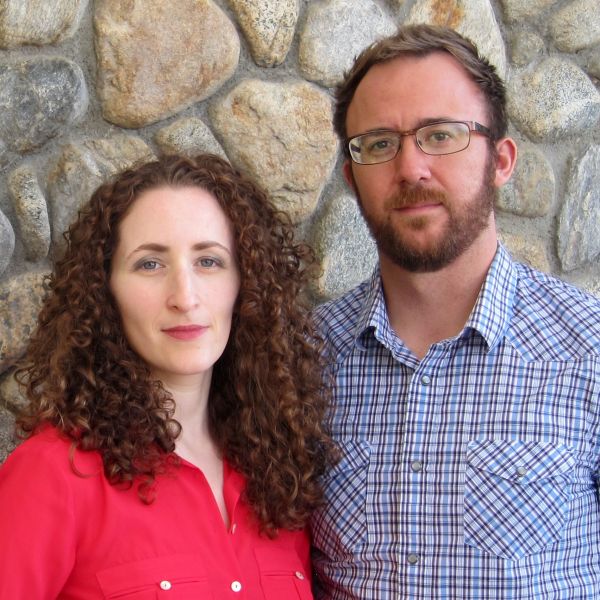
Download PDF
An+Interview+Riot+Material.pdf
Five New Public Art Works For a Richardson Mixed-Use Development _ Glasstire.pdf
Biography
Timothy Berg and Rebekah Myers are a studio art collaborative based in Claremont, California. Berg and Myers have participated in multiple solo exhibitions including On the bright side... at the Falconer Gallery at Grinnell College (2016); Site Unseen at the American Museum of Ceramic Art in Pomona, CA (2014); Honest to Goodness at Santa Barbara City College (2014); An embarrassment of riches at Dean Project Gallery in New York, NY (2013); and As Luck Would Have It at Nääs Konsthantverk Galleri in Göteborg, Sweden (2009). Berg and Myers have also participated in numerous group exhibitions in the US, Mexico, South Korea, Qatar and Kuwait. Their work is included in many private and public collections including The Betty Woodman Collection at the University of Colorado and the Biedermann Museum in Germany. Berg is a Professor of Art and Myers is a Visiting Instructor at Pitzer College in Claremont, California. Berg has curated a number of exhibitions including The Incongruous Body at the American Museum of Ceramic Art in Pomona, CA (2018); Tannaz Farsi - Crowd Control at Pitzer College Art Galleries (2012) and The 67th Scripps Ceramic Annual - Making Fun (2011) at the Williamson Gallery, Scripps College. Berg received his MFA from the New York State College of Ceramics at Alfred University in Alfred, NY (2003) and BFA magna cum laude from the University of Colorado in Boulder, CO (2000). Myers received her BFA from the University of Colorado in Boulder, CO (2000) and continued her studies in graphic design at the California College of the Arts in San Francisco, CA.
Artist Statement
Our objective is to distill the stereotypical perceptions and associations within our culture into visually compelling objects, sculptures and installations. Whether we are creating an installation describing the impending doom of the dinosaurs or a valise filled with gold lucky charms our iconography is drawn from the animals, objects and/or situations that operate as commonplace tropes within our culture. We take these generic stand-ins and invest them with multiple meanings through humorous allusions. The aesthetic decisions we make are informed by the consumer culture we inhabit and our desire to create ultra-smooth forms and high gloss finishes that seduce the viewer. Although each individual piece we create may be understood on it’s own terms, the pieces within each exhibition reinforce one another and manifest connections, which make the whole greater than the sum of its parts.
Timothy Berg and Rebekah Myers are a studio art collaborative based in Claremont, California. Berg and Myers have participated in multiple solo exhibitions including On the bright side... at the Falconer Gallery at Grinnell College (2016); Site Unseen at the American Museum of Ceramic Art in Pomona, CA (2014); Honest to Goodness at Santa Barbara City College (2014); An embarrassment of riches at Dean Project Gallery in New York, NY (2013); and As Luck Would Have It at Nääs Konsthantverk Galleri in Göteborg, Sweden (2009). Berg and Myers have also participated in numerous group exhibitions in the US, Mexico, South Korea, Qatar and Kuwait. Their work is included in many private and public collections including The Betty Woodman Collection at the University of Colorado and the Biedermann Museum in Germany. Berg is a Professor of Art and Myers is a Visiting Instructor at Pitzer College in Claremont, California. Berg has curated a number of exhibitions including The Incongruous Body at the American Museum of Ceramic Art in Pomona, CA (2018); Tannaz Farsi - Crowd Control at Pitzer College Art Galleries (2012) and The 67th Scripps Ceramic Annual - Making Fun (2011) at the Williamson Gallery, Scripps College. Berg received his MFA from the New York State College of Ceramics at Alfred University in Alfred, NY (2003) and BFA magna cum laude from the University of Colorado in Boulder, CO (2000). Myers received her BFA from the University of Colorado in Boulder, CO (2000) and continued her studies in graphic design at the California College of the Arts in San Francisco, CA.
Artist Statement
Our objective is to distill the stereotypical perceptions and associations within our culture into visually compelling objects, sculptures and installations. Whether we are creating an installation describing the impending doom of the dinosaurs or a valise filled with gold lucky charms our iconography is drawn from the animals, objects and/or situations that operate as commonplace tropes within our culture. We take these generic stand-ins and invest them with multiple meanings through humorous allusions. The aesthetic decisions we make are informed by the consumer culture we inhabit and our desire to create ultra-smooth forms and high gloss finishes that seduce the viewer. Although each individual piece we create may be understood on it’s own terms, the pieces within each exhibition reinforce one another and manifest connections, which make the whole greater than the sum of its parts.